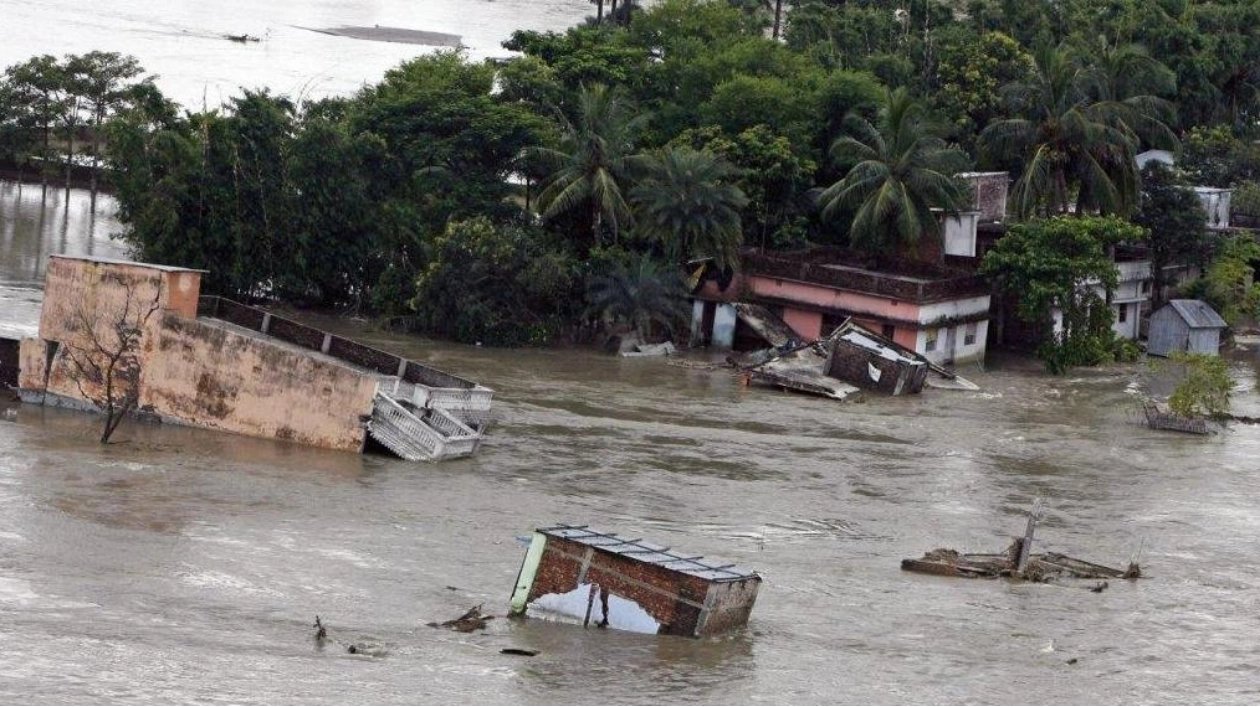Shifting is inherent to a river's nature. However, when a river breaks free from its channel and carves a new path across the landscape, devastating floods can strike communities with little to no warning. For decades, researchers have grappled with understanding exactly how river channels become primed for sudden diversions, known as avulsions. A study published on September 18 in Nature may have finally resolved this debate, demonstrating how two factors collaborate to facilitate the rerouting of a river. Building on these findings, the researchers also developed an algorithm that shows promise in predicting the new path of an avulsed river.
"These are monumental floods, in some cases, civilization-changing," says sedimentologist Douglas Edmonds of Indiana University in Bloomington. In 2010, avulsions on the Indus River in Pakistan contributed to flooding that displaced approximately 20 million people. Despite this, flood hazard models still struggle to predict where rivers will reroute, according to Edmonds. "It's really an invisible flood hazard." Avulsions require both a setup and a trigger—an overburdened situation and a final push. "The trigger could be a flood, an earthquake, or even a logjam in a river," Edmonds explains. The setup refers to how sediment deposition has primed a river for diversion, which is the fundamental cause of avulsion, according to Edmonds. "Rivers experience floods all the time, but they don't avulse all the time."
The new study focused on defining the setup, for which there were two competing hypotheses. One suggested that avulsions occur when a river becomes superelevated, or when sediment deposition raises the river's water level above the surrounding land. The other hypothesis posited that avulsions happen due to a slope advantage, where the slope of a potential new path becomes steeper than the river's current path. Edmonds and his colleagues began by analyzing satellite data on approximately 170 avulsions, noting the downstream distance of river diversions. They found that avulsions were roughly three times more common near river mouths and mountain fronts than in between.
Focusing on 58 river channels with high-resolution topographical data, the researchers measured the superelevation and slope advantage before avulsions. They discovered that superelevation best explained avulsions near mountains, while slope advantage best explained those near river mouths and deltas. "There's so much sediment flowing out of the mountains that the rivers just pile it up until they're superelevated and spill over," Edmonds says. In deltas, cohesive mud forms very steep natural levees around deep channels, and avulsions need a steep slope advantage to start cutting through the levee, he adds.
These two factors—slope advantage and superelevation—work together inversely, the researchers found. The more superelevated a river becomes, the less of a slope advantage it needs to avulse, and vice versa. "It is the first time that anyone's been able to show that with data," says Penn State geologist Elizabeth Hajek, who was not involved in the study. Avulsions occurred when the mathematical product of these two factors surpassed a threshold value, the researchers found. With precise topographical measurements of a river's channel, which is more feasible for larger rivers and areas with clear skies, you could likely use this threshold metric to identify where avulsions are likely to occur, says geomorphologist Vamsi Ganti of the University of California, Santa Barbara, who was also not involved in the study.
The researchers developed a computer algorithm that highlighted potential paths for an avulsed river, considering the steepness of the terrain and the river's momentum. When tasked with predicting the pathways of 10 past avulsions, the algorithm accurately captured the path of each one. "It's a really nice tool," Hajek says. "It could be really, really helpful for identifying areas of concern." The plan is to develop avulsion hazard maps for vulnerable regions around the globe, according to Edmonds. "Now that we have this metric, we can go measure it on rivers all over the world."






